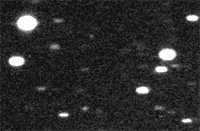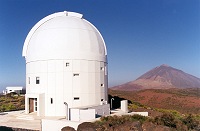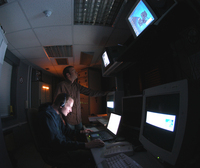Catastrophe at the door
Tuesday, September 10, 2019
Thursday, August 8, 2013
Radioactivity from Fukushima across Pacific
Right now, a massive amount of highly radioactive water is escaping into the Pacific Ocean from the ruins of the destroyed Fukushima nuclear facility in Japan. This has been going on all day, every day for more than two years. The enormous amounts of tritium, cesium and strontium that are being released are being carried by wind, rain and ocean currents all over the northern Hemisphere.
And of course the west coast of the United States is being hit particularly hard. When you drink water or eat seafood that has been contaminated with these radioactive particles, they can stick around for a very long time. Over the coming years, this ongoing disaster could potentially affect the health of millions upon millions of people living in the northern hemisphere, and the sad thing is that a lot of those people will never even know the true cause of their health problems.
For a long time, the Japanese government has been trusting Tepco to handle this crisis, but now it has become abundantly clear that Tepco has no idea what they are doing. In fact, the flow of radioactive water has gotten so bad that authorities in Japan are now calling it an "emergency"...
Highly radioactive water seeping into the ocean from Japan's crippled Fukushima nuclear plant is creating an "emergency" that the operator is struggling to contain, an official from the country's nuclear watchdog said on Monday.
This contaminated groundwater has breached an underground barrier, is rising toward the surface and is exceeding legal limits of radioactive discharge, Shinji Kinjo, head of a Nuclear Regulatory Authority (NRA) task force, told Reuters.
The amount of water that we are talking about is absolutely enormous. According to Yahoo, 400 metric tons of water is being pumped into the basements of destroyed buildings at Fukushima every single day...
The utility pumps out some 400 metric tons a day of groundwater flowing from the hills above the Fukushima Daiichi nuclear plant into the basements of the destroyed buildings, which mixes with highly irradiated water that is used to cool the reactors in a stable state below 100 degrees Celsius.
Tepco is trying to prevent groundwater from reaching the plant by building a "bypass" but recent spikes of radioactive elements in sea water has prompted the utility to reverse months of denials and finally admit that tainted water is reaching the sea.
And of course all of that water has to go somewhere. For a long time Tepco tried to deny that it was getting into the ocean, but now they are finally admitting that it is...
Tepco said on Friday that a cumulative 20 trillion to 40 trillion becquerels of radioactive tritium had probably leaked into the sea since the disaster. The company said this was within legal limits.
Tritium is far less harmful than cesium and strontium, which have also been released from the plant. Tepco is scheduled to test strontium levels next.
40 trillion becquerels of radioactive tritium have gotten into the Pacific Ocean?
And that is what they are publicly admitting. The reality is probably far worse.
And all of that tritium is going to be around for a very long time. You see, the truth is that tritium has a half-life of about 12 years.
But strontium is even worse. Strontium can cause bone cancer and it has a half-life of close to 29 years.
And now Tepco is admitting that extremely dangerous levels of strontium have been escaping from Fukushima and getting into the underground water. And of course the underground water flows out into the Pacific Ocean...
Tepco said in late June that it had detected the highly toxic strontium-90, a by-product of nuclear fission that can cause bone cancer if ingested, at levels 30 times the permitted rate.
The substances, which were released by the meltdowns of reactors at the plant in the aftermath of the huge tsunami of March 2011, were not absorbed by soil and have made their way into underground water.
Subsoil water usually flows out to sea, meaning these two substances could normally make their way into the ocean, possibly affecting marine life and ultimately impacting humans who eat sea creatures.Cesium has an even longer half-life than strontium does. It has a half life of about 30 years, and according to samples that were taken about a month ago levels of cesium at Fukushima have been spiking dramatically...
Samples taken on Monday showed levels of possibly cancer-causing caesium-134 were more than 90 times higher than they were on Friday, at 9000 becquerels per litre, Tokyo Electric Power (Tepco) revealed.
Levels of caesium-137 stood at 18 000 becquerels per litre, 86 times higher than at the end of last week, the utility said.
"We still don't know why the level of radiation surged, but we are continuing efforts to avert further expansion of contamination," a Tepco spokesperson stated.
When cesium gets into your body, it can do a tremendous amount of damage. The following is an excerpt from a NewScientist article that described what happens when cesium and iodine enter the human body...
Moreover the human body absorbs iodine and caesium readily. "Essentially all the iodine or caesium inhaled or swallowed crosses into the blood," says Keith Baverstock, former head of radiation protection for the World Health Organization's European office, who has studied Chernobyl's health effects.
Iodine is rapidly absorbed by the thyroid, and leaves only as it decays radioactively, with a half-life of eight days. Caesium is absorbed by muscles, where its half-life of 30 years means that it remains until it is excreted by the body. It takes between 10 and 100 days to excrete half of what has been consumed.
And it is important to keep in mind that it has been estimated that each spent fuel pool at the Fukushima nuclear complex could have 24,000 times the amount of cesium that was produced by the nuclear bomb that the U.S. dropped on Hiroshima at the end of World War 2.
Overall, the Fukushima nuclear facility originally contained a whopping 1760 tons of nuclear material.
That is a massive amount of nuclear material. Chernobyl only contained 180 tons.
And of course the crisis at Fukushima could be made even worse at any moment by a major earthquake. In fact, a magnitude 6.0 earthquake hit northern Japan on Sunday.
This is a nightmare that has no end. Every single day, massive amounts of highly radioactive water from Fukushima is systematically poisoning the entire Pacific Ocean. The damage that is being done is absolutely incalculable.
Wednesday, March 6, 2013
Thursday, October 13, 2011
ESA's space hazards team have found an asteroid that comes close enough to Earth to pose an impact threat
Amateur discovers near Earth asteroid in ESA-sponsored survey |
For the first time, observations coordinated by ESA's space hazards team have found an asteroid that comes close enough to Earth to pose an impact threat. The space rock was found by amateur astronomers, highlighting the value of 'crowd-sourcing' to science and planetary defence.
The discovery of asteroid 2011 SF108 was made by the volunteer Teide Observatory Tenerife Asteroid Survey (TOTAS) team during an observation slot sponsored by ESA's Space Situational Awareness (SSA) programme in September.
The four-night survey used the 1m-aperture telescope at ESA's Optical Ground Station at Teide on Tenerife in the Canary Islands.
This is not the first asteroid found under SSA sponsorship, but it is the first that qualifies as a 'near Earth object' – an object that passes close enough to Earth during its orbit around the Sun that it could pose an impact threat.
Images require human evaluation
During TOTAS observations, the telescope runs automated asteroid surveys for several hours using software developed by amateur astronomer and computer scientist Matthias Busch from the Starkenburg Amateur Observatory in Heppenheim, Germany.
However, potential sightings must still be evaluated by humans.
The team comprises 20 volunteers, most of whom took part in the manual evaluation of images captured during the session on 28/29 September.
Optical Ground Station (OGS) building, Tenerife |
"Images are distributed to the entire team for review, and any one of them could be the discoverer of a new asteroid," says Detlef Koschny, Head of NEO activity for SSA. "This time, the luck of the draw fell to Rainer Kracht."
"As volunteer work, it is very rewarding. When you do spot something, you contribute to Europe's efforts in defending against asteroid hazards."
The orbit of asteroid 2011 SF108 brings it no closer than about 30 million km to Earth – a safe distance.
| ||
"The discovery was only possible with the excellent software developed by Matthias Busch, who also spotted this object in the images on the second night and sent the observations to the Minor Planet Center."
To date, some 8000 NEOs have been discovered worldwide but many thousands more are suspected to exist, particularly in the size of metres to hundreds of metres. It is important to find and track these to determine if any pose an impact threat to Earth.
Control room at ESA's Optical Ground Station, Tenerife |
TOTAS is helping to lay the foundation for a future European asteroid survey as part of the full SSA programme, which is to be decided in 2012.
Such a survey would use multiple 1m telescopes to scan the complete sky every night, a much larger effort than at present, and is expected to discover several NEOs per week. It would use a mix of professional and 'crowd-sourced' astronomers.
Currently, professional asteroid surveys are performed only in the USA. The only significant asteroid survey in Europe now is the La Sagra Sky Survey, undertaken by amateur astronomers in southern Spain.



